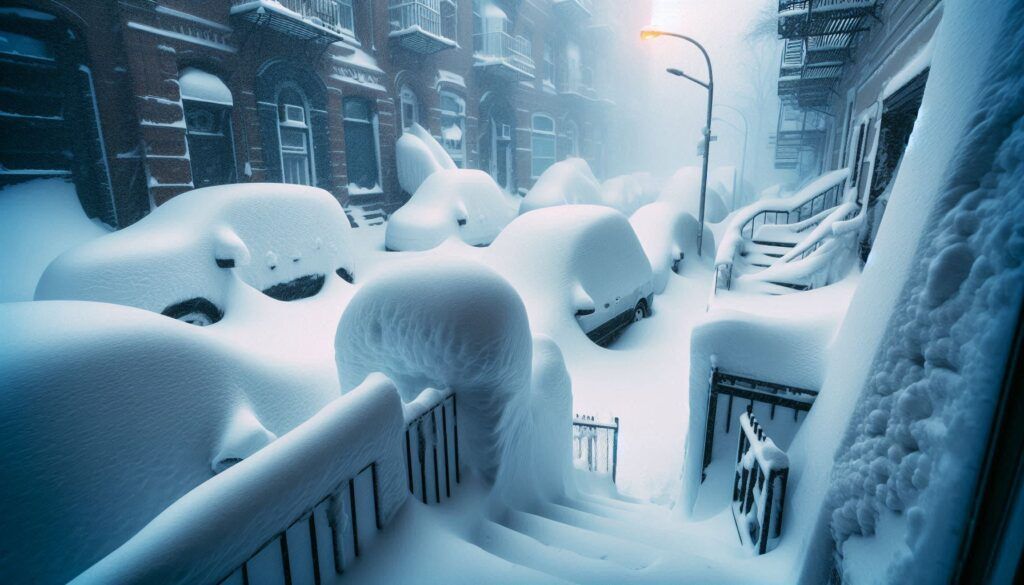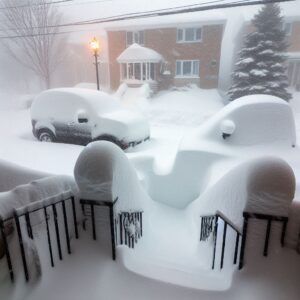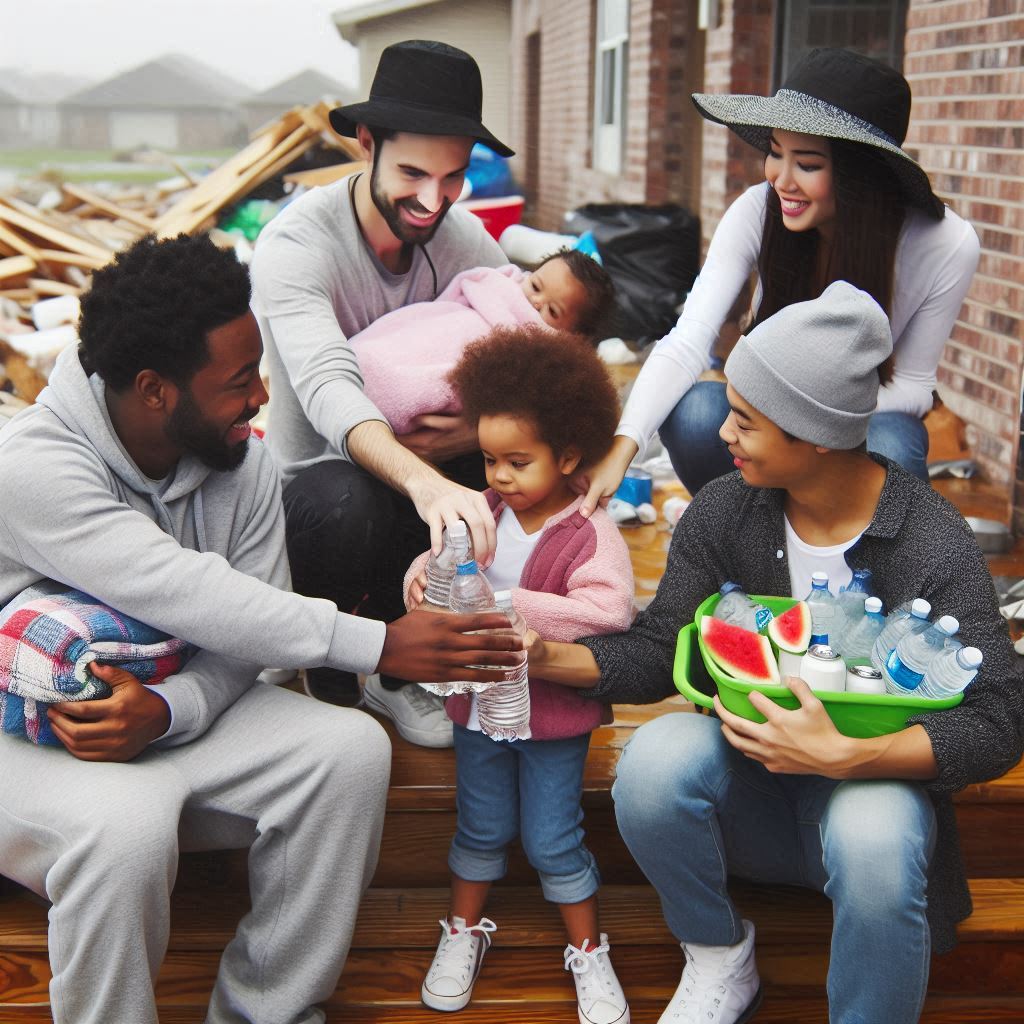 Blizzards can be both magical and terrifying. But what exactly makes a blizzard a blizzard? Well, it’s all about the wind and visibility. Imagine standing in a snow globe that’s been shaken like crazy. If the wind’s blowing at least 35 mph and reducing visibility to under a quarter of a mile for at least three hours, congrats, you’re in a blizzard! Anything less, and it’s just a regular snowy day.
Blizzards can be both magical and terrifying. But what exactly makes a blizzard a blizzard? Well, it’s all about the wind and visibility. Imagine standing in a snow globe that’s been shaken like crazy. If the wind’s blowing at least 35 mph and reducing visibility to under a quarter of a mile for at least three hours, congrats, you’re in a blizzard! Anything less, and it’s just a regular snowy day.
Ever wondered how blizzards form? It’s all in the clash. Warm air bumps into really cold air, and boom, you’ve got yourself a storm brewing. This interaction creates strong winds and heavy snowfall, painting everything in white.
History is peppered with some record-breaking blizzards. The Great Blizzard of 1888, for example, dumped over 40 inches of snow and left New York City in a snowy chaos. Then there was the 1996 ‘Blizzard of ’96’, which blanketed the US East Coast, causing chaos and cheers (hey, who doesn’t love a snow day?).
Snowflakes during blizzards can fascinate like none other. Each one is unique, with intricate patterns that look like tiny works of art. It’s amazing to think how each flake, though small and fragile, contributes to the grand spectacle of a blizzard. So, next time you catch one on your mitten, know that it’s part of nature’s incredible snow show. That’s it for the fun facts on blizzards. What about the bottom line of dealing with it?
Blizzard Preparedness: Ensuring Safety Before the Storm
When it comes to blizzards, a little prep goes a long way. First things first, let’s talk food. We should all have an emergency preparedness food supply, whether it is because we expect blizzards in our area, or for any type of potential disaster. Stock up on non-perishable items like canned goods and anything that you might like. Many of us already have days or weeks of food just for normal living, but much of it might be in the frig or freezer. It’s smart to have a stash that covers at least an additional three days that doesn’t require refrigeration, in case of a blackout. Consider getting yourself a solar generator just in case. Water’s important too, so keep a gallon per person per day ready.
Now, survival gear supplies. Imagine it’s the ultimate cozy camping trip in your living room. Keep a flashlight handy with extra batteries. Have a radio, preferably a crank one, because technology seems to love going on vacation during storms. And don’t forget those Mylar thermal blankets. They might look like they belong in a sci-fi movie, but they’re lifesavers when it comes to keeping warm. You should keep tools like spade shovels in the house too. You might have to dig your way out of the front door.
Then there’s the family emergency plan. Everyone in the house should be in the loop about what to do if you get separated or need to evacuate. Make sure every person has key information like emergency contact numbers and meeting points. It’s not just about having a plan but understanding it too.
Finally, keep storm windows or shutters ready to put up. Secure any loose outdoor furniture or decorations. Blizzards love turning these into flying debris. Charge your devices and keep a good book (or five) around, because a cozy reading session might be just the thing while nature does its thing outside.
Navigating the Storm: Staying Safe During a Blizzard
Alright, the blizzard’s here, and it’s showtime. First rule? Stay inside if you can. Cold and windy Nature puts on a much better show from the safety of your window. But if you have to venture out, bundle up! We’re talking layers, gloves, hats, and waterproof boots—the works.
Inside might get chilly, especially if the power goes out. Grab those Mylar blankets from your prep kit, and layer up. Get everyone in the family huddled together for some shared warmth—you can even make it a fun storytelling session.
Hypothermia and frostbite aren’t picky about who they come after, so keep an eye out for symptoms if you have to be outside. Numb skin or extreme shivering are big red flags. If you notice these, head indoors immediately.
If the lights go out, know your candles and flashlights are ready. Use them safely. Never leave a candle unattended. For heat, keep doors closed to conserve warmth, and maybe stay in one room to keep things cozy.
Communication is your lifeline. Keep your phone charged and listen to weather updates on your radio. Check in with family or neighbors if you can, especially if you know someone is riding it out solo. A quick call or message can make all the difference.
Post-Blizzard Protocol: Recovery and Safety After the Storm
 Once the blizzard passes, it’s like the calm after the storm, but don’t let your guard down just yet. It’s time to think about what to do after a blizzard. First off, take a look around. Check for any snow accumulation on rooftops. If there’s a lot, it might be tempting to climb up and clear it, but it’s safer to call in a professional. Icicles can also be dangerous, so knock them down safely or get help if they are out of reach.
Once the blizzard passes, it’s like the calm after the storm, but don’t let your guard down just yet. It’s time to think about what to do after a blizzard. First off, take a look around. Check for any snow accumulation on rooftops. If there’s a lot, it might be tempting to climb up and clear it, but it’s safer to call in a professional. Icicles can also be dangerous, so knock them down safely or get help if they are out of reach.
Clearing driveways and walkways is a must, but don’t rush it. Take breaks to avoid overexertion. The snow can wait; your health can’t. If you’ve got a snow blower, now’s its time to shine. If shoveling, go slow and steady, bending with your knees to save your back.
Assess your property for any storm damage, especially areas that might have been covered by snow. Look for broken branches or debris that’s come down during the storm. If there’s structural damage to your home, take photos for insurance purposes and contact a professional for repair estimates.
Community support is vital after a blizzard. Reach out to neighbors, especially those who might need extra help, like the elderly. Organize a little neighborhood cleanup if it’s safe, or just check in to share stories and make sure everyone’s alright. It’s amazing how a bit of community spirit can brighten even the grayest of days.
____________________________________________________________________________________________
* I may earn a commission if you click on certain links on this website.
